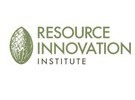"As published in the "CEA Energy & Water Benchmarking Report," CEA demonstrates significant water savings potential over field farming. Yet, drawing that apples-to-apples conclusion is challenging without the understanding that water use in traditional farming typically only measures irrigation, whereas CEA facility water usage incorporates stages of production not accounted for in the limited field farming benchmarks that exist" share the editors of the 'Guide to environmental Accounting and reporting for CEA operations' (2024).
Standards for reporting
In early 2023, the Resource Innovation Institute (RII) and international greenhouse and indoor farms joined forces to establish agreed-upon methodologies to guide environmental accounting and reporting related to CEA and how it can be compared to traditional farming.
Developed by a team of collaborating entities involved in the CEA Footprint Project, the guide is a how-to resource for energy, water, and carbon emissions accounting and reporting. Download the report today to get started on your journey toward standardized environmental accounting and reporting systems and methodologies.
Comparing resource inputs and outputs at a facility level and across agricultural segments is important as the resource-constrained future unfolds. Agreement on how resources will be measured is of imminent importance, as is the establishment of boundaries determined within the measurement systems. The sooner data can be standardized, collected, and analyzed, the quicker and better decision-makers can guide efficiency and decarbonization strategies.
This guide intends to propose measurement systems and methodologies and encourage their market adoption as the CEA sector scales and becomes a meaningful part of the agricultural landscape. Through widespread adoption of the approaches cataloged in this guide, the market has a unique opportunity to standardize at an early development stage.
The guide provides an overview of key performance indicators (KPIs) relevant to internal and external audiences, and expressions of industry-relevant carbon. Recommended equations and approaches reflect what is unique about the CEA sector (e.g., lack of use of fertilizers), and build off work done by other sectors on subjects relevant to all facets of the economy (e.g., employee commuting).
Collaborators
Bowery Farming, Little Leaf Farms, 80 Acres Farms, Grow Up, Local Bounti, Ljusgårda, Vertical Harvest, and Jones Food Companies have participated in the report. The steering committee includes the International Fresh Produce Association, CEA Alliance, FarmTech Society, The US Department of Energy, the WWF, and the Swedish Environmental Research Institute.
Click here to access the guide.
For more information:
Resource Innovation Center
www.resourceinnovation.org
